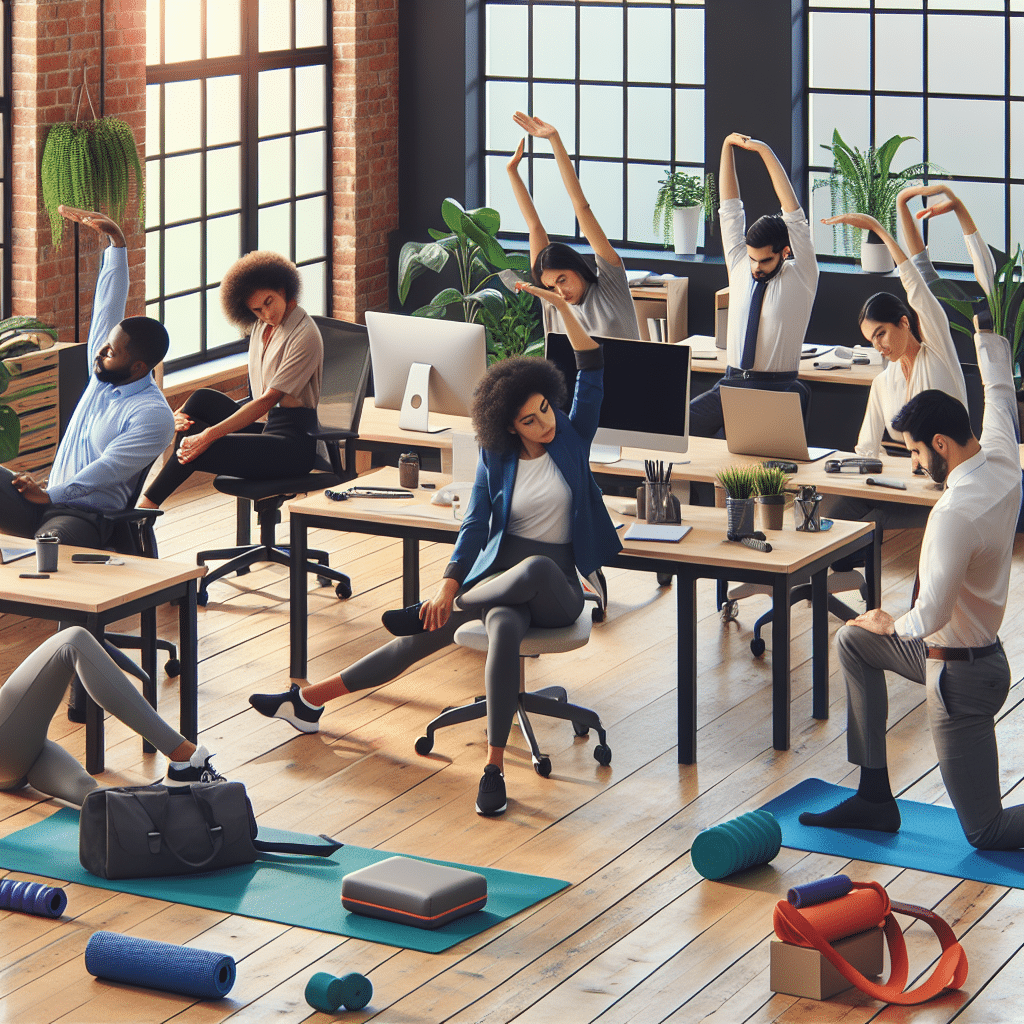Stretching Exercises for Desk Workers: A Comprehensive Guide
Why Stretching Matters for Desk Workers
Desk workers often face the challenge of prolonged sitting hours, leading to a range of physical issues including neck pain, back discomfort, and muscle stiffness. Regular stretching can alleviate these problems, increase blood flow, improve posture, and enhance overall productivity. Incorporating stretching into your daily routine can significantly counteract the adverse effects of sedentary behavior.
Key Areas to Target
- Neck and Shoulders
- Upper Back
- Lower Back
- Hips and Glutes
- Hamstrings and Calves
- Wrists and Hands
Each of these areas plays a crucial role in maintaining comfort and function throughout the workday.
Effective Stretching Exercises
1. Neck Stretches
-
Side Neck Stretch:
- Sit up straight in your chair.
- Gently tilt your head towards your right shoulder until you feel a light stretch on the left side of your neck.
- Hold for 15-30 seconds. Switch sides.
-
Chin Tucks:
- Sit with your back straight and shoulders relaxed.
- Draw your chin straight back toward your neck without tilting your head up or down. Hold for 5 seconds and release.
- Repeat 10 times.
2. Shoulder and Upper Back Stretches
-
Shoulder Shrugs:
- Raise both shoulders up toward your ears as high as possible and hold for 2-3 seconds.
- Release and relax. Repeat 10 times.
-
Seated Twist:
- Sit upright and place your right hand on the back of the chair, turning your torso to the right.
- Hold for 15-30 seconds and switch sides.
3. Lower Back Stretches
-
Seated Forward Bend:
- While sitting, extend your legs together and reach towards your toes, keeping your back straight.
- Go as far as comfortable without straining. Hold for 15-30 seconds.
-
Cat-Cow Stretch:
- Stand and hinge at your hips, placing your hands on your knees.
- Arch your back (cow) then round your back (cat). Repeat 10 times, synchronizing with your breath.
4. Hip and Glute Stretches
-
Seated Figure Four Stretch:
- While seated, cross your right ankle over your left knee.
- Lean forward gently until you feel a stretch in your right hip. Hold for 15-30 seconds. Switch sides.
-
Hip Flexor Stretch:
- Stand and take a step back with your right foot.
- Bend your left knee and press your hips forward to feel a stretch in your right hip flexor. Hold for 15-30 seconds, then switch sides.
5. Hamstring and Calf Stretches
-
Standing Hamstring Stretch:
- Stand up and prop your right heel on the edge of your chair or a low desk surface.
- Keeping your knee straight, lean forward until you feel a stretch in the back of your leg. Hold for 15-30 seconds, then switch sides.
-
Calf Stretch:
- Stand facing a wall and put your hands on the wall at about eye level.
- Step back with one foot while keeping both heels on the ground, feeling the stretch in the calf of the back leg. Hold for 15-30 seconds, then switch sides.
6. Wrist and Hand Stretches
-
Wrist Flexor Stretch:
- Extend your right arm in front with the palm facing up. Use your left hand to gently pull back on your fingers.
- Hold for 15-30 seconds, then switch hands.
-
Finger Stretch:
- Spread fingers wide and squeeze them into a fist, holding each position for a few seconds.
- Repeat this 10 times to relieve tension in your hands.
Incorporating Stretching into Your Routine
- Set Reminders: Use apps or calendar alerts to remind you to stretch every hour.
- Create a Stretching Space: A designated area in your workspace can make it easier to take a few minutes to stretch.
- Do Quick Routines: Even a minute or two of stretching can make a big difference in your comfort level throughout the day.
Tips for Safe Stretching
- Warm Up: If you’ve been sitting for a while, do some gentle movements to warm up your muscles before deep stretching.
- Listen to Your Body: Never push to the point of pain. Stretch gently and hold to the point of mild tension.
- Stay Consistent: Make stretching a regular part of your workday for the best results.
By integrating these stretching exercises into your daily routine, you can reduce discomfort, enhance your productivity, and maintain your physical well-being while spending long hours at your desk. Embrace the opportunity to move thoughtfully throughout your day, and notice the positive impact on your overall work experience.
